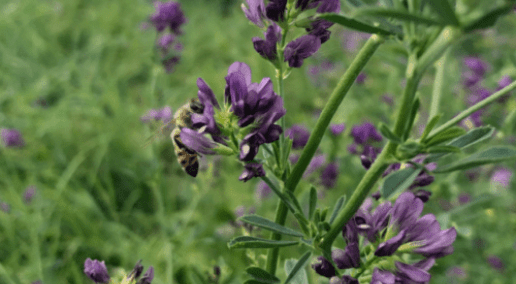During his session on Nov. 30 at the Canadian Forage and Grassland Association’s 14th Annual Conference in Harrison Hot Springs, B.C., Francois Blouin presented a talk on the Habitat and Biodiversity Assessment Tool (HBAT).
The HBAT is an online awareness tool that can be used by growers and extension personnel to help identify and prioritize tailored management practices and conservation measures that can help maintain or improve wild species habitat and the sustainability of the agricultural operation. Being a self-serve tool with a secure online access and profile, the HBAT ensures privacy and allows users to save reports and assessments. It is tailored to each farm location and context, allowing it to be customized to producer interests and farm objectives.
The HBAT’s objectives focus on:
- documenting what habitats exist on the land
- what species potentially occur there
- providing additional helpful resources for species and habitat management
The tool also provides information and contacts for organization that can assist with guidance and funding.
The HBAT had its beginning with the Alberta Environmental Farm Plan (EFP), the goal of which is to remain competitive and better meet international sustainability benchmarks by including an additional chapter in the EFP about biodiversity and conservation. In 2018, federal and provincial/territorial governments agreed on a new approach to species at risk (SAR) management. The Pan-Canadian Approach to the Conservation of SAR is a multi-species/ecosystems approach using priority places, priority species and priority sectors and threats. New funds through the Canada Nature Fund were allocated to the CFGA to implement the HBAT across Canada.
Within the HBAT, there are prioritized and general stewardship opportunities (SO) to select from. Prioritized SO’s are packages of compatible actions that can all be applied on the same land parcel and favour species that live harmoniously together. Packages are also sorted into priority, ranked by the greatest potential impact on biodiversity. General SOs have benefits that go beyond priority species to have broader ecosystem benefits.
The tool is currently standardized among nine provinces in Canada. This allows for consistency and for testing and improvements of SOs. It can be integrated with other tools, knowledge and technology in an adaptive management framework associated with biodiversity conservation and sustainable agriculture. Users are able to set up objectives they want to achieve, make a plan for management/actions to monitor, implement this plan and evaluate and adjust. It is especially useful at the step of setting objectives and making a plan for management.
Francois concluded his presentation noting that the HBAT is an awareness tool tailored to the farm context that can be used in an adaptive management framework to help streamline the process of setting biodiversity conservation objectives and determining options for greatest anticipated impact within the customized framework that fits your farm, environmental values and objectives.
Additional Information
Video - A Habitat and Biodiversity Assessment Tool for Saskatchewan HBAT+
Video - Alberta Environmental Farm Plan: Species at Risk
Conference recordings
To hear all of this session, you can purchase access to it and all of the recordings from the 2023 conference proceedings. Note, if you attended the 2023 conference, the recordings are available for free to those who registered for the conference.
For more information, email [email protected].
Back to August 2024



Leave a Comment